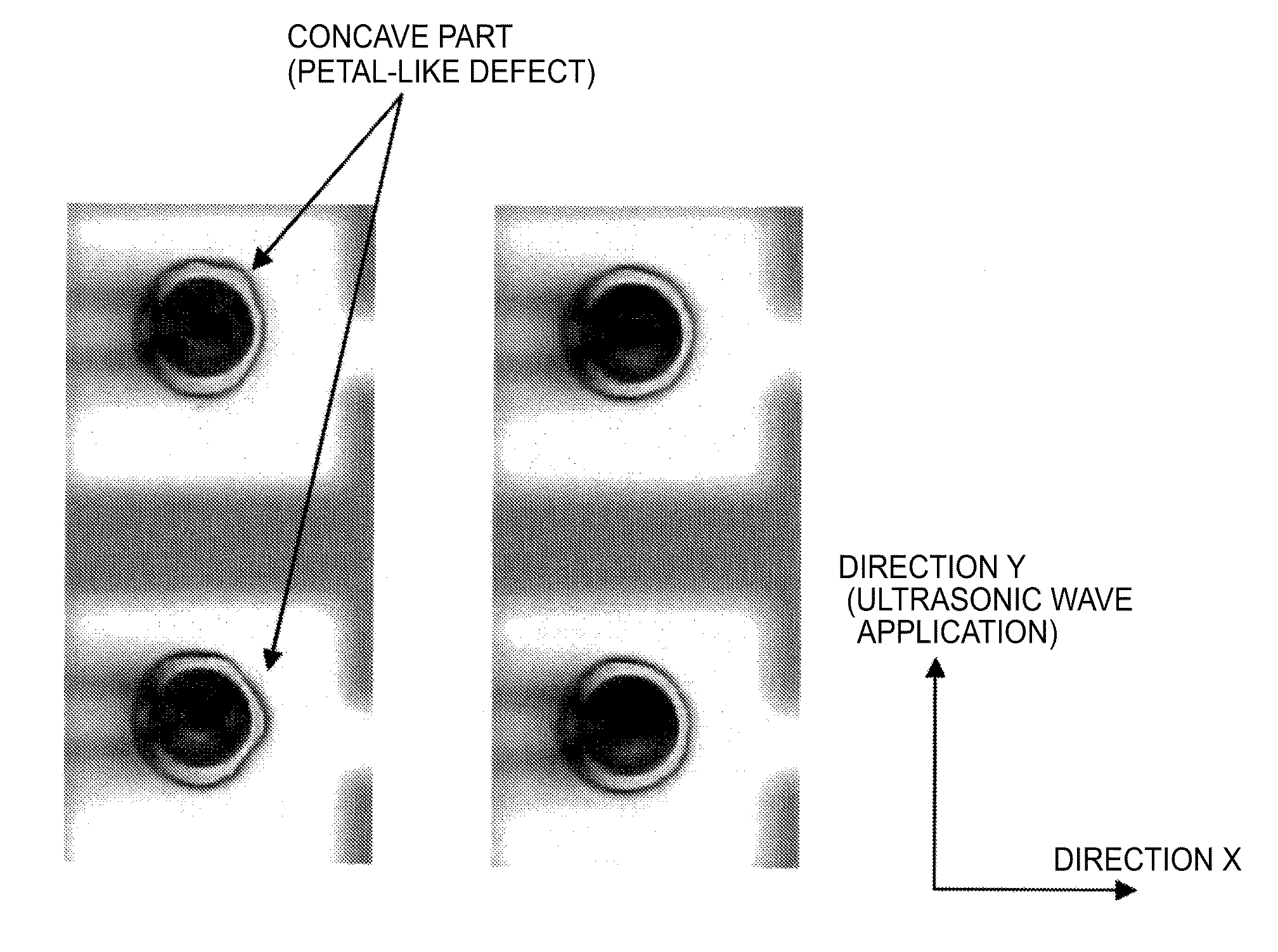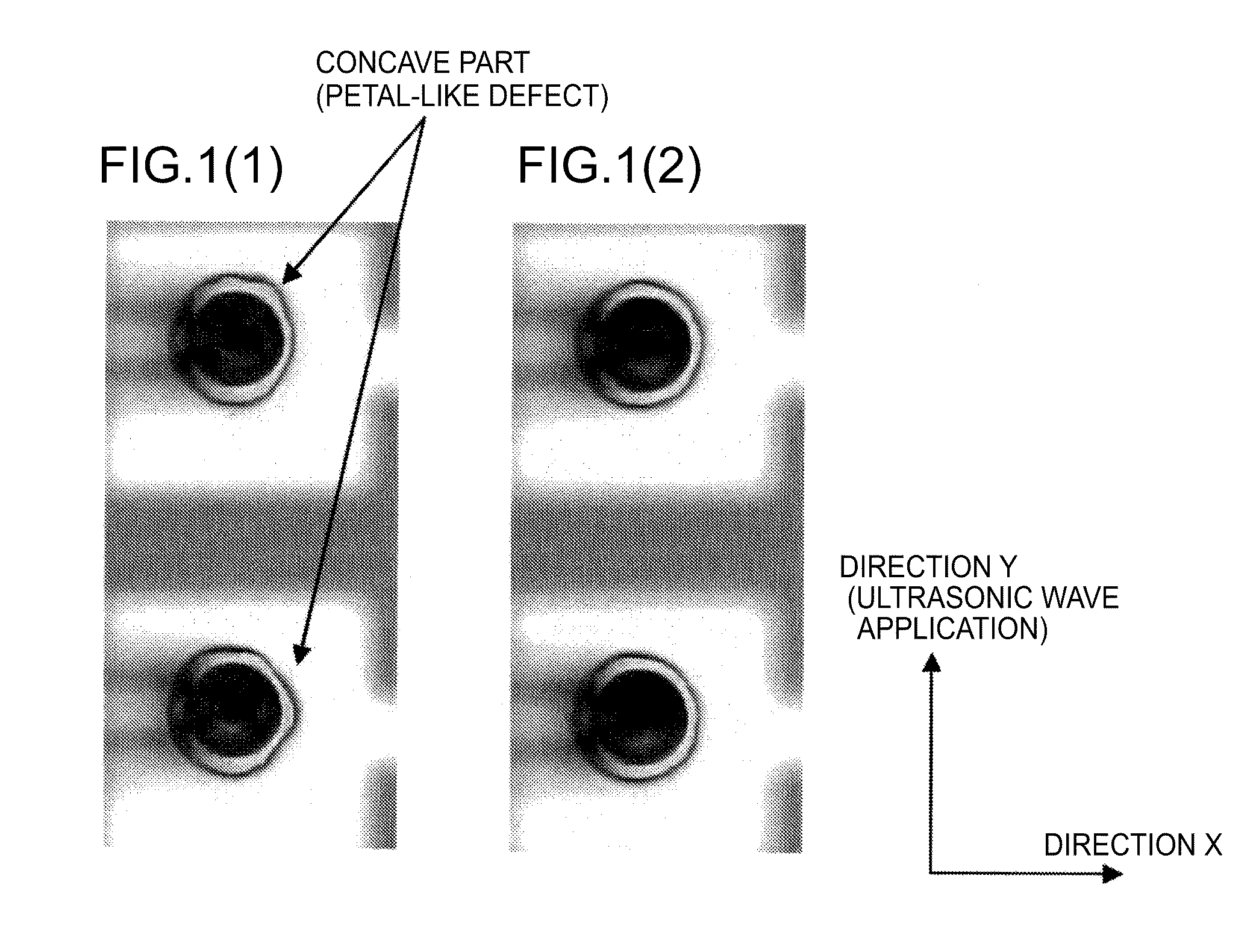Gold wire for semiconductor element connection
a technology of semiconductor elements and gold wires, applied in the direction of semiconductor devices, solid-state devices, basic electric elements, etc., can solve the problems of insufficient mechanical strength, difficult maintenance of a loop thereof, and broken bonding wires, so as to improve the workability of semiconductor device manufacturing and product yield, the effect of reducing the number of defects
- Summary
- Abstract
- Description
- Claims
- Application Information
AI Technical Summary
Benefits of technology
Problems solved by technology
Method used
Image
Examples
examples
[0045]Next is a detailed description of the present invention based on examples, which are only shown by way of example, and the invention is not limited by the examples.
first example
[0046]Samples of bonding wires containing 0.001% by mass of Ca or 0.001% by mass of La were prepared to study the effect of adding Ti and V.
[0047]The above amount of Ca or La was added to a gold material having a purity of 99.9998% or more by mass, and cast into ingots of 5 mm in diameter and 100 mm in length. Likewise, another material was also prepared by adding 0.001% by mass of Ti or V to these elements. After the casting, the composition of each sample was analyzed, and it was confirmed that the Si content was 0.001% or less by mass, and the contents of Ca, rare earth elements, Pb, Sn, Li and Na other than the addition elements were 0.0002% or less by mass.
[0048]Then, the ingots were each rolled to about 2 mm square using a groove rolling device, and drawn to a 0.56 mm in diameter using diamond dies. Subsequently, they were allowed to undergo process annealing at 400° C. for 10 minutes in Ar atmosphere. After that, it was drawn to a 25 μm in diameter at 10 m / min using the diamo...
second example
[0057]For studying the effect of Ca or rare earth elements on the press-bonding shape, the bondability was examined in a fixed range of the Ti content from 0.0015 to 0.004% by mass, depending on the additive amount of Ca or rare earth elements.
[0058]Cast ingots of 6 mm diameter were prepared by adding the predetermined elements to the gold material used in the first example. Then, the ingots were rolled to about 2 mm square using a groove rolling device, and drawn to a 23 μm in diameter using a diamond dies in a lubricating liquid. In the drawing process, a reduction in area per each passage through the die was about 10%, and the work rates of the bonding wires were 99.8%. Thereafter, heat treatment (thermal refining) was continuously performed using a tubular furnace in Ar atmosphere, and then a tensile test of the bonding wires was performed at varying temperatures to adjust the breaking elongation as the breaking elongations were adjusted to 4%
[0059]The bonding test was performed...
PUM
| Property | Measurement | Unit |
|---|---|---|
| elastic modulus | aaaaa | aaaaa |
| diameter | aaaaa | aaaaa |
| Young's modulus | aaaaa | aaaaa |
Abstract
Description
Claims
Application Information
 Login to View More
Login to View More - R&D
- Intellectual Property
- Life Sciences
- Materials
- Tech Scout
- Unparalleled Data Quality
- Higher Quality Content
- 60% Fewer Hallucinations
Browse by: Latest US Patents, China's latest patents, Technical Efficacy Thesaurus, Application Domain, Technology Topic, Popular Technical Reports.
© 2025 PatSnap. All rights reserved.Legal|Privacy policy|Modern Slavery Act Transparency Statement|Sitemap|About US| Contact US: help@patsnap.com


